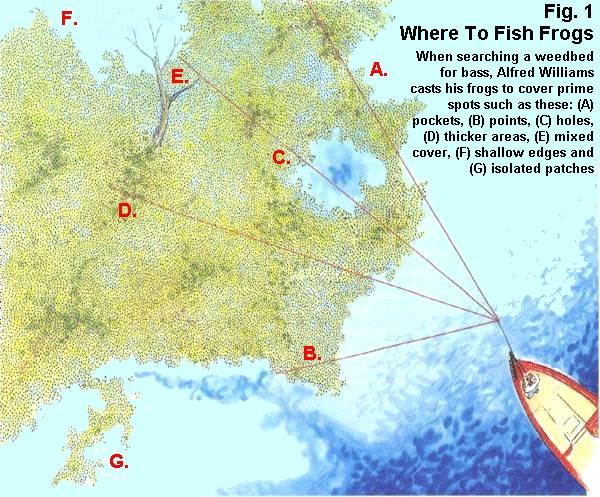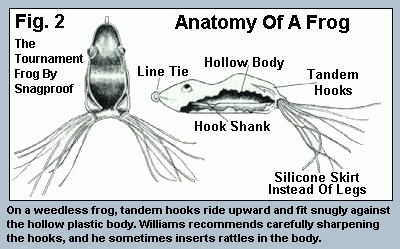Since the earliest artificial lures, designs imitating frogs have played a
significant role - so much so, in fact, that these proven bass-getters prompted
a number of wacky innovations.
Even today, you'll see everything from frogs with mechanical swimming legs to
ones that really croak. In the early days, there were even hook-bearing harnesses
for live frogs and wooden lures covered with real frog skins.
Most current designs are much simpler. Popular types are molded of soft rubber
and are hollow-bodied and buoyant. They have large tandem hooks that ride with the barbs
|
|
pointing up and fitting snug to each side of the lure's body, making them truly
weedless. The intent is to have the profile of a true frog, yet one that will come
through cover easily and collapse to expose the hooks when struck by a bass.
Because of their castability and weedless nature, these lures are ideal for thick
surface vegetation, such as pads or matted grass.
When it comes to making fake frogs hop, none is better than Alfred Williams. He is
the acknowledged expert, according to his peers on the B.A.S.S. tour. His skills
with the bait have fooled fish from his home state of Mississippi to as far away as the Canadian
|
|
border of Lake Ontario.
"Frogs work anywhere there's lily pads or topped-out moss,"
he claims.
Not only do they work, they're Williams' first choice for bringing big fish to the top.
"Whether it's milfoil, hydrilla, or lotus pads, there's nothing like a frog for quality fish,"
he contends.
The advantages are obvious. Because frogs are hollow-bodied and buoyant, they
can traverse virtually any kind of soggy terrain. And unlike metal spoons, they can
be left in the strike zone indefinitely, continually coaxing disinterested fish.
|



